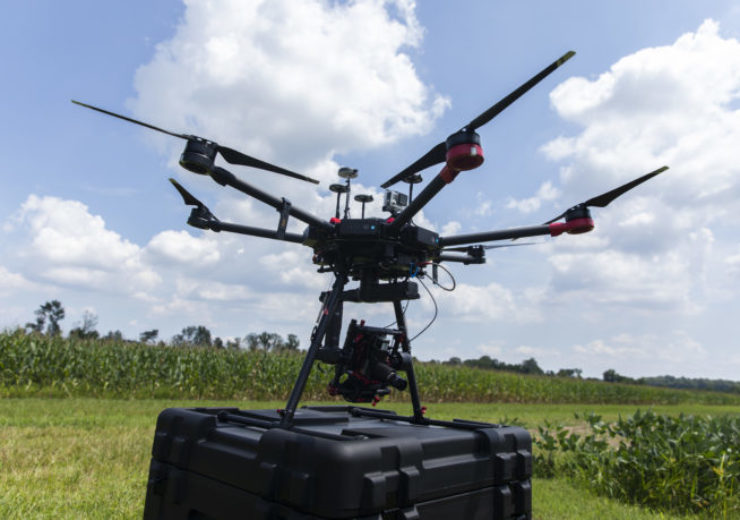The Southeast initiative is part of an effort to incorporate the use of technological advancements into agriculture operations in the region

Image: Southeast has used funding to purchase hyperspectral camera and DJI Matrice 600 drone. Photo: courtesy of Southeast Missouri State University.
The US Department of Agriculture (USDA) has provided $51,000 (£41,915) Rural Business Development Grant (RBDG) to the Department of Agriculture and the Economic and Business Engagement Center at Southeast Missouri State University to infuse digital technology in agriculture operations.
The initiative is part of Southeast strategy to integrate technological advancements into agriculture operations in the region.
Hyperspectral camera and DJI Matrice 600 drone for agricultural operations
With the funding, Hyperspectral camera and DJI Matrice 600 drone have been purchased by Southeast.
The new hyperspectral camera facilitates remote sensing in agriculture, including isolating crop injury, soil nutrition status, disease and insect damage.
Under the grant, the university’s new drone and hyperspectral camera will be used in the research activities of the University of Missouri Fisher Delta Research Centre, the Missouri Soybean and Merchandising Council, and the Missouri Rice Research and Merchandising Council.
Southeast will also encourage local farmers and the regional agriculture community to integrate the new technologies in the industry. Farmers can evaluate make crop health decisions, as the technology becomes more available and affordable.
Through combining with other technologies, including images from an infrared camera, Southeast can take precision agriculture decisions based on detection of crop stress, nutrient deficiencies, noxious weed detection, yield prediction and seed viability.
At present, the university produces corn and soybeans at the David M. Barton Agriculture Research Center in Cape Girardeau, cotton at Southeast’s Sikeston campus, and rice at the Missouri Rice Research Farm in Glennonville, Missouri.
In addition, the university will incorporate the new technology into curriculum for students to study weed management, soil fertility, plant nutrition, pest management, crop production and water management.
Southeast agriculture professor Dr Mike Aide said: . “Hyperspectral imaging captures and processes images with several hundred wavelengths, such as light from plants, soil or residue in a given field.
“The advantage of hyperspectral remote sensing is the ability to collect indistinct spectral differences that aren’t visible to the human eye and provide more accurate field evaluations for crop health in the form of a map.”
